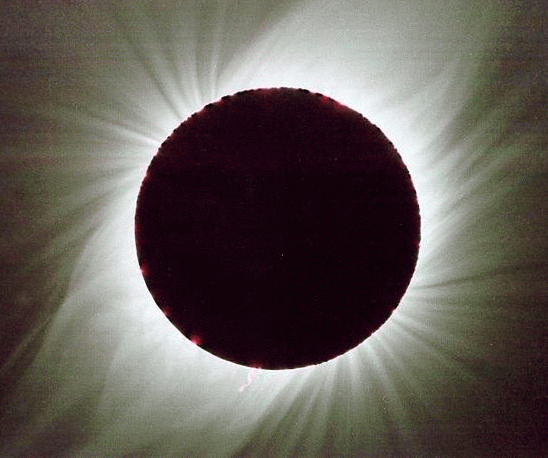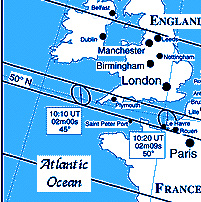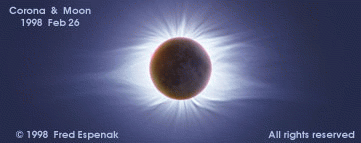
The sun observed during a total solar eclipse by Professor E. Hiei. This excellent observation of the suns corona during totality reveals the components and configuration of the suns corona close to solar minimum. Note the bright blobs distributed around the moons limb, these represent valleys through which the sun's bright chromospheric emission is seen (Bailys Beads).
The discovery of the corona and its very nature was enabled by the many
eclipse observations, the most important of which were the European total
solar eclipses as they has the highest concentration of observers.  The last solar eclipse where totality was observed from the UK occured in 1999. This gave observers the opportunity
to observe the totality for just over two minutes in the south-western
edge of Cornwall.
The last solar eclipse where totality was observed from the UK occured in 1999. This gave observers the opportunity
to observe the totality for just over two minutes in the south-western
edge of Cornwall.
The next total solar eclipse will occur on 26 March 2006 and can be seen along a
narrow corridor which runs through Europe, Africa and south Asia. Visit Mr. Eclipse for more infromation on dates of up coming solar eclipses. The animation shows the path of the umbral and
penumbral shadow cast on the Earth by the moon during a total solar eclipse in 2001. Although, we now have dedicated spacecraft to study the
problems presented by the Sun's Corona it is still useful to perform experiements
on the corona using the longer wavelength (UV) bright emission lines which
represent forbidden (very hot) atomic transistions. These emissions are
unattenuated by our atmosphere but are usually hard to distinguish above
the usually dominant photospheric light. One such experiment was conducted by scientists
of the CLRC.


